
First released in 2013, Tony Valente’s Radiant tells the story of Seth, a young apprentice sorcerer who dreams of becoming a Nemesis Hunter. Continuously on the move with his mentor Alma, the two of them are Infected – humans who came into contact with demons (Nemesis) and survived. In a world where magic is viewed as unnatural and taboo, the Infected are branded as outcasts, gaining the ability to wield magic (Fantasia) for a price in the form of a curse. But as events transpire and Seth experiences the cruelty of humans and the Sorcerers who would take advantage of the weak and defenseless, he makes a new vow to find the source of the Nemesis and end the cycle of discrimination – to find Radiant.
It’s hard to believe two years have passed since the Radiant anime first premiered and the manga was localized to English for the first time in North America in 2018. Since the end of the first season, I’ve been quietly collecting volumes of the Radiant manga (or manfra if you prefer) as they release in the US. Truth be told, I had no plans to cover the manga on the blog as I wanted to enjoy it at my leisure and take a break as I broadened my horizons and honed my writing pen through other means. But a funny thing happened as I started reading through the series from the beginning. What started as a casual read ended with me catching up with the story entering the current arc. I’ll avoid spoiling where they land for my anime-only readers, but it was one of the most engrossing fantasy stories that I’ve read in quite some time.
Shonen as genre has a long and complex history that would take far too long to document, and while plenty of writers, critics, and online personalities have offered up their own opinions of what a masterpiece is, many of them tend to either live on nostalgia or in the heat of the moment, when a series reaches the peak of popularity, or is still in the public eye. I’m no exception to this, but with an ongoing manga in circulation, a 13th volume due in North America this month, and the second season of the anime now available on Netflix France, now seemed like the perfect time to take another critical look. To that end, I powered through the first 11 volumes. Does Radiant’s original comic still live up to its namesake?

To answer that, let me put it to you another way. You see, Radiant isn’t simply one of my favorite series of all time. It’s a reminder that for all the corporate slices of PR hype, the uninspired trends that reward failure, and whatever this account is used for, Shonen – and by extension, anime/manga – can still be pretty damn good. Because for whatever missteps and controversy 2020 brought to the industry, I’ll never stop being a fierce advocate for the medium or pop culture in general. For that, my friend, is my raison d’etre – to strive to do a little better than the day before.
Right from the beginning, Radiant evokes a sense of familiarity for those who have even the slightest exposure to other Shonen works, notably Naruto, Dragon Ball, and One Piece – three series the author has publicly noted were inspirations. It’s evident that Valente pays a great deal of homage to the classics, but what separates Radiant from its contemporaries is its understanding of what makes a great Shonen. Though most critics will tell you the art of a great story lies in its characters, world building, and storytelling, I have my own terminology to describe these concepts further: refinement, progression, and consequences.
From a more critical eye, Radiant’s plot is pretty straightforward. There’s the stubborn main boy with a heart of gold and a large ambition, the tough but nurturing mentor/teacher, the sidekick/gag character, and the heroine/best friend who ends up traveling with the protagonist, with further characters introduced as time goes on. There are even a few animal mascot characters thrown in for good measure! As Valente’s first manga, volume one pulls from a variety of established tropes while warmly inviting you into the world of Pharenos through its expansive environments and architecture, clearly invoking a European aesthetic in its designs.

With the general overview out of the way, I go back to my first concept of refinement. As North America has been receiving each volume every three months over a two-year period, it’s difficult for me to picture what it must have been like for our international readers following the story between 2013 and today. What is clear is that Radiant’s refinement didn’t happen overnight. Rather, it’s the result of having spent several years redefining the manga through research, clever use of foreshadowing, and fine tuning its approach to Shonen. In other words, it has significantly improved in the seven years the author has been working on this title – a feat more impressive when you consider the manga has just reached its 100th chapter this year (volume 13), with 14 total volumes out as of this writing. For comparison, most mainstream titles traditionally hit the upper 30 – 40s, with chapters ranging further in the triple digit range!
To further illustrate this, let me highlight the one area the series struggled with at the very beginning: the comedy. While humor is a very subjective topic, the first two volumes lean a little heavier on the comedy side, with a few outdated jokes that would seem more out of place now than at the time of the manga’s original release. Though its animated counterpart manages to avoid repeating a lot of the manga’s early shortcomings, it’s surprisingly tame overall compared to its influences and closest competitors. Even its more risqué content is more of a stepping stone for the author to demonstrate his artistry and colorful designs as opposed to simply catering to a certain demographic or “fan service” to use the technical term.
Unlike traditional manga which is published chapter to chapter in a publisher’s magazine or digital app before compiling to their own standalone volumes, Radiant is serialized straight to print – roughly two volumes a year internationally. Despite being mostly a one-man team doing the art and story, it also goes to show the importance of having the right editor navigating, because the series undergoes a bit of a transformation with each subsequent volume. As it enters darker territory, the tone and comedy are paced further out for the audience to process the impact of events without overshadowing them. Whereas many titles begin to stagnate and settle into a comfortable rhythm, Radiant bucks the trend, not only growing its plot forward, but by growing alongside its audience. Nowhere is this more evident than its progression of the main characters.

Like many others before him, Radiant’s Seth is very much cut from the same build as most Shonen heroes. Brash, overly confident, and naïve, his initial hubris in the face of reality begins to chip away at his original archetype after his first run in with a Nemesis and experienced Sorcerers turned bank robbers. Despite thwarting the Bravery Quartet, killing the Nemesis, and managing to save the townsfolk who initially rejected him as an Infected, Seth is left with many unanswered questions about the state of the world. Dissatisfied with discrimination of the Infected and the injustice of the people in power who would sow chaos for their self-benefit, and unsatisfied with simply killing the Nemeses that rain down from the sky, this becomes the catalyst for him to leave his home and dream behind in order to destroy Radiant once and for all.
In looking to their predecessors, many Shonen authors tend to wear their inspirations on their sleeves when coming up with their initial characters. Looking at three of the most popular manga right now, you can see subtle parallels to other works while adding their own personal touches. My Hero Academia’s Kōhei Horikoshi inverted the dynamic of the two main rivals to their logical extremes, yet they begrudgingly come to tolerate one another and acknowledge where they come up short. Koyoharu Gotōge, of Demon Slayer: Kimetsu no Yaiba fame, wrote Tanjiro with the formulaic approach to Shonen, but stands apart by emphasizing his humility and kindness to the very enemies he has sworn to cut down. Lastly, Yūki Tabata drew inspiration from his own real-world relationships for his characters, unintentionally making the spiritual successor to Naruto in the form of Black Clover.
While many series tend to be derivative of what came before, it’s the current crop of modern Shonen heroes in titles like Spy x Family, The Promised Neverland, and Monster #8 that has me most excited for what comes next. By redefining the traditional roadmap of adventure/power/status > fight > repeat, and prioritizing vertical over horizontal growth (character over strength), modern Shonen has become a testbed for new and unfamiliar territory where the characters and the premise are becoming more grounded in reality. As part of that progressive shift, Seth holds a very special place in my personal list of favorite protagonists. For all his faults, Seth’s character growth, complexity, and tragedy becomes the antithesis of his origins as he finds his ideals routinely challenged, if not disproven altogether.
Though manga purists will undoubtedly scoff at what I am about to say, I made similar observations while I was covering the anime. In fact, the more I reflect on it, the more I return to the exact same conclusion. Because for a battle action story, Radiant isn’t a battle focused Shonen. To repurpose a quote from the authors of The Golden Slaine Awards of 2018 (Note: the original NSFW article can be found here):
It’s a story about defining one’s humanity in the face of adversity, in a world that will not accept them. It’s about a boy who learns the hard way that all actions carry consequences, even with the best intentions. It’s about the people who keep him from sinking into darkness and becoming the monster that the world thinks he is.
And it’s a story about Seth and his companions as people, not just fighters.
Now I could continue explaining what makes this group of misfits such a compelling cast, but in the interest of time, I’m going to focus on the three that should give you a general overview of the series’ strengths, starting with the character that arguably had the most narrative impact well beyond the first major act through its consequences.
***Spoilers follow for Volume 4 (Season 1 for further reference). Skip to the next section if you prefer. ***
I hesitate to call Hameline an “antagonist,” but as far as character foils go, she serves as Radiant’s quintessential dark reflection of the main hero. Having both experienced the persecution and torment of the humans who would eagerly execute them if given the chance, Hameline’s story takes a bloodier path than Seth who had the warmth of his mentor Alma to guide him from abusing his magic to fight back. As she was pulled away from friends and family by the Inquisition, forced to fight as a weapon for an ungrateful populace, and witnesses the complete culling of an entire district by a deranged soldier named Konrad who would eventually usurp the position of Captain in his attempts to further demonize the immigrant population, she finds a new family in the very Nemeses she was supposed to eliminate.
Holding the citizens of Rumble Town accountable for their complicity in the violence and failure to act, Hameline gains control of the Nemeses after they heed her call, setting the stage for her revenge. Yet when the time of reckoning comes, it’s not a climactic battle that ends with the hero emerging victorious. Nor is it Hameline who recognizes that her actions would simply reciprocate the cycle of hatred and death. It’s Seth who realizes that the two are treading the same destination to change the world through different means.
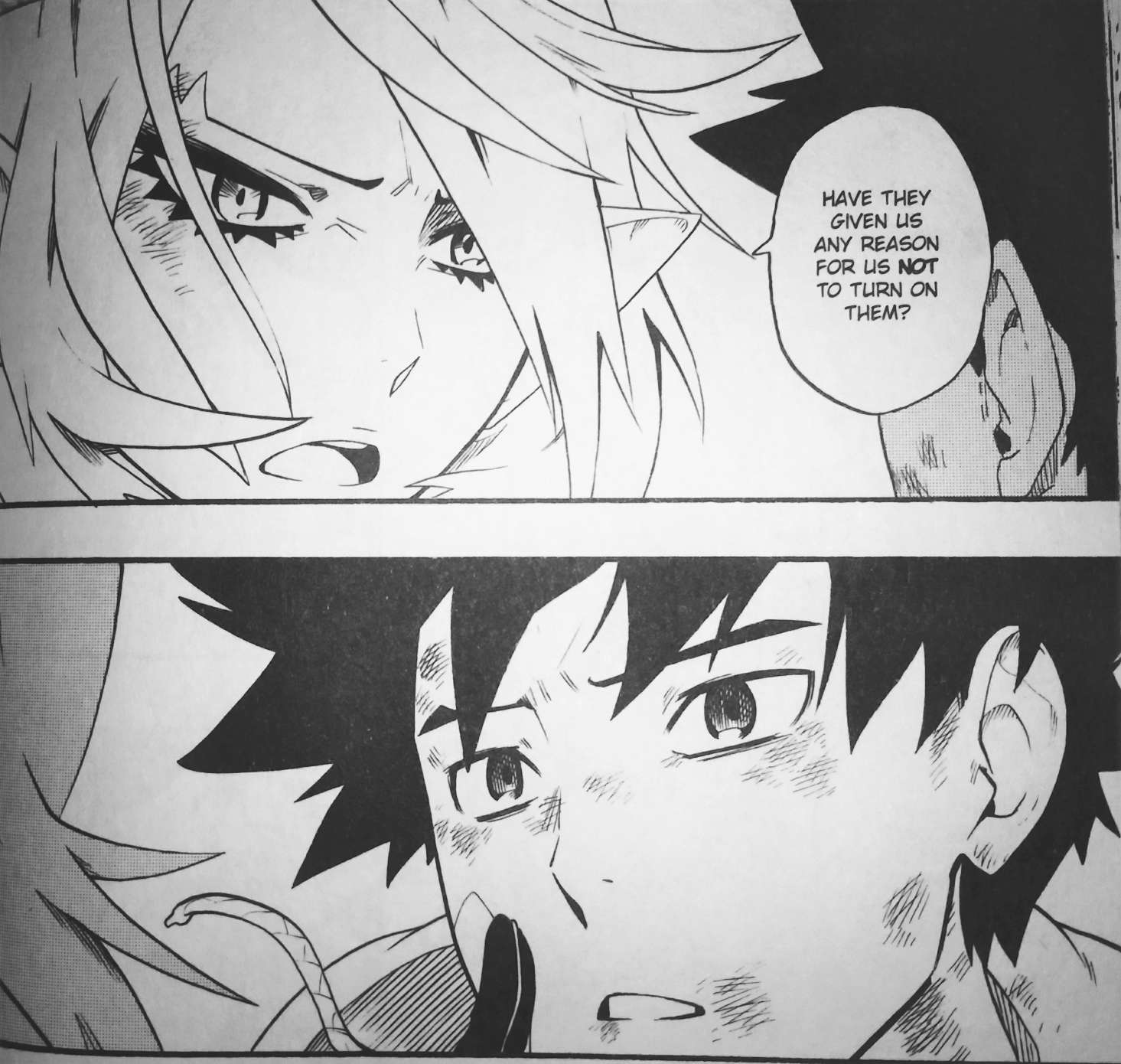
Seeing the futility of their conflict, the fighting ends, but not without cost. Entrusting Seth with the future, along with her Nemesis brethren, Hameline sacrifices herself against the onslaught of the Inquisitions’ Miracle Workers, the Thaumaturges. Though the world will always brand her a terrorist, she dies an unsung hero, leaving her spirit and legacy behind to a visibly broken Seth. Left with an identity crisis of who he is, doubts about his mission, and survivor’s guilt from the ordeal, the story of Radiant continues towards a new and unexpected path.
***Spoilers End***
I started this article with the idea of refinement, progression, and consequences as the concepts of what makes for a memorable work – a masterpiece if you will. By now, I’ve covered each component individually, with some intersection in between, but what happens when you put them together? Well, this brings me to the hidden fourth attribute that bears the weight of holding a series together: the execution. I’ve read and watched a lot of Shonen over the years to the point that it would probably be easier to list which ones I haven’t touched, but the most critical factor that always seems to be the breaking point for me is how good the execution is. Seth and Hameline are just two examples among a handful, so before wrapping this up, I’d like to highlight two other characters who most certainly elevated Radiant to where it stands today.
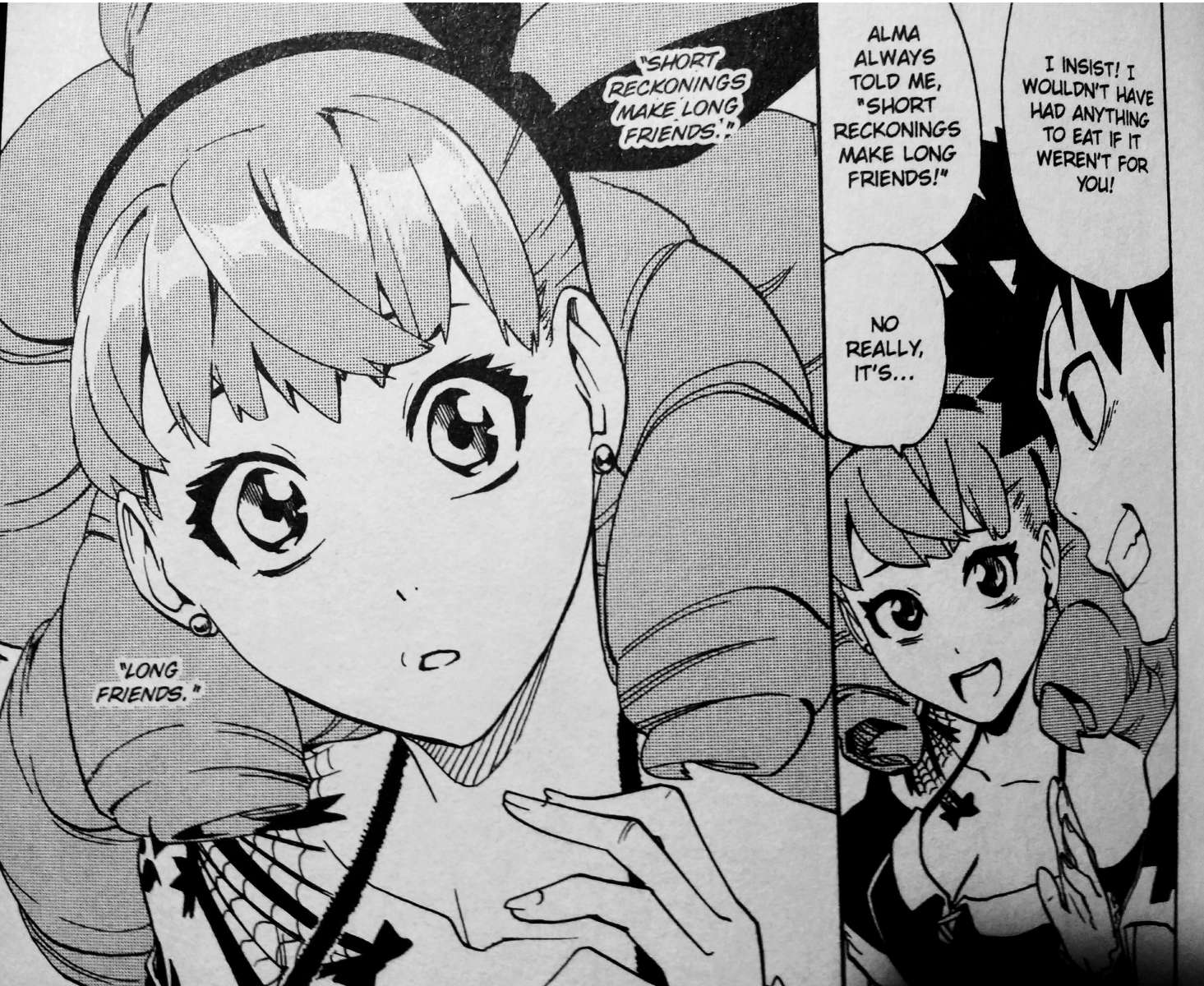
Introduced in volume one, Mélie is a Sorceress in training who works as a Tracker – a specialist that can locate Nemeses and other Fantasia-based entities. She runs into Seth onboard an Inquisition ship that had arrested her after an “incident” occurred on board and discovering she is an Infected. Her Infection is a split personality that switches between friendly and cheerful to violent and aggressive under stress or other states of heightened alertness. It’s because of this curse that has alienated Mélie from friends, family, and any potential chance of a normal life, causing her to sink into depression from the isolation long after. Despite her random fits and hyperactive tendencies, the two become close friends as she slowly begins to accept the curse as part of her.
It’s clear for much of the first four volumes (season 1) that Mélie’s curse damaged her ability to make meaningful friendships, but she never actively stopped trying to connect to people because of it. While Seth becomes the first friend to be able to see both of her personalities as the same individual, even managing to pierce through her alter ego’s animosity on a few occasions, it’s Mélie’s role in the next arc that motivates her to recognize and reaffirm her own identity.
***Minor Spoilers for volumes 5 – 10 (Season 2) begin here.***
After the events of Rumble Town, things take a notable turn for the worse after he abruptly leaves without so much as a goodbye following his awakening. A rift forms between them as Seth’s powers become out of control, forcing him to prioritize their safety over their friendship. That was the initial idea at first when he tried to explain himself to Mélie during the Cyfandir arc, but as the conversation turns bitter, it’s not long after that her words begin to sink in and Seth realizes the gravity of his actions – his inability to confide in others, and himself.
It’s an emotionally driven scene, but one that provides the necessary avenue for Radiant to establish its modern execution on Shonen, emphasizing the importance of dialogue and writing through its characters. Not unlike the way Seth outgrew his initial archetype, Mélie’s reaction and subsequent actions in this arc further distances her from the heroines who likely influenced Valente’s designs.
Related: Radiant Returns With One Of Its Most Emotional Episodes
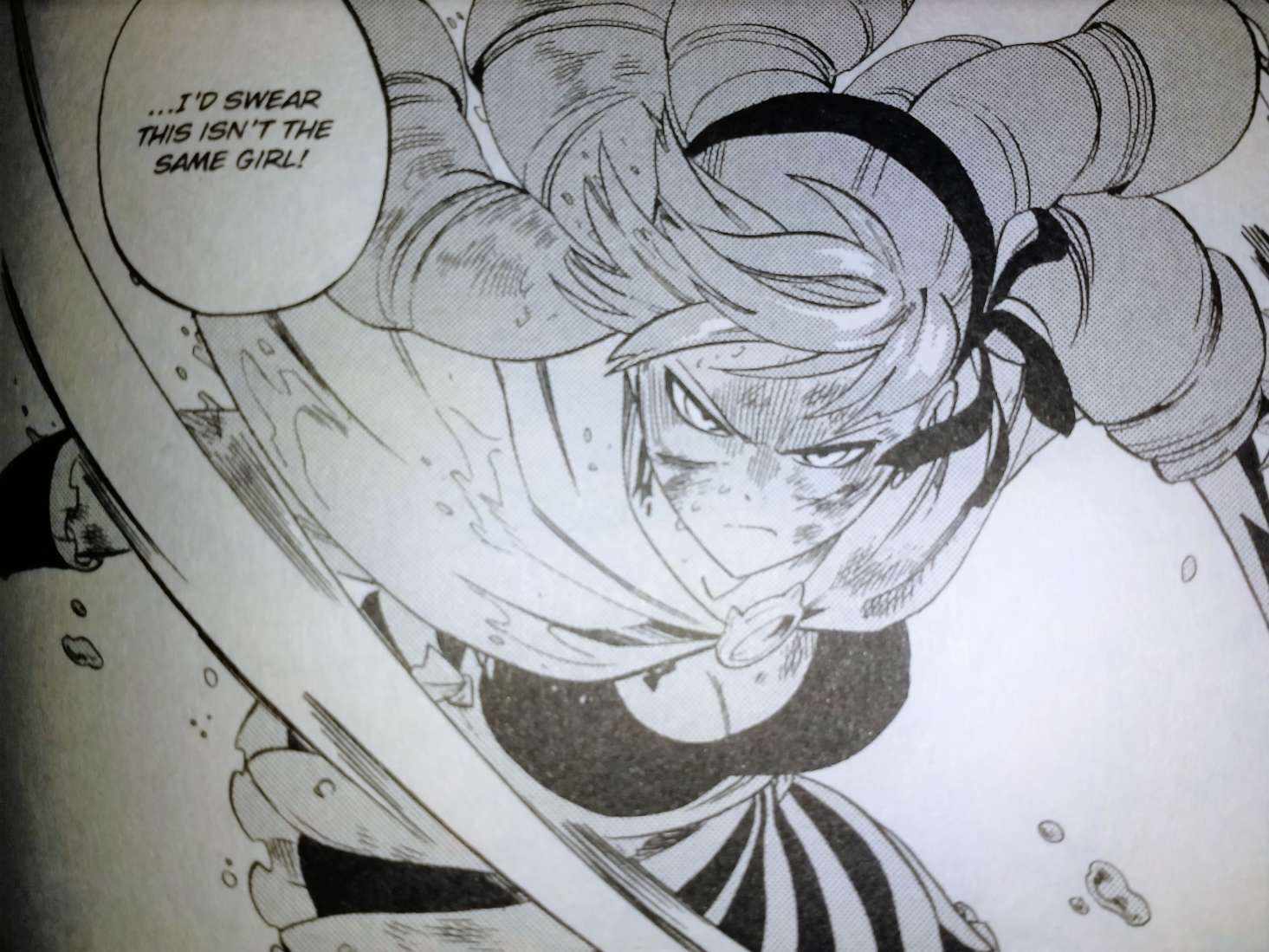
By this point in the story, Mélie’s characterization is given further priority as she comes to Seth’s aid after nearly succumbing to the dark influence residing within. Overcoming her self-doubts and proving herself to be a skilled Sorcerer, she becomes the voice that finally breaks through to Seth when he is incapable of containing the beast within, even defeating a Thaumaturge with little more than her wits and the resolve to stand on her own terms. Acknowledging the gravity of their individual curses, Mélie is able to reciprocate Seth’s past kindness, forming a closer bond in the process by easing some of the guilt and burden he’s been carrying within without losing sight of who she is.
Related: Radiant Lives Up To Its Namesake As One Of The Best Shonen Anime Of The Year
***Spoilers End***
Much like Radiant’s anime counterpart, Seth and Mélie’s partnership remains one of the series most compelling elements in the original comic. Whereas many series tend to underutilize their heroines by sidelining their role in the story, falling back on distasteful tropes, or simply not investing enough time examining the dynamics of a particular duo – or my personal favorite, insisting the relationship carries weight because it “exists”– Radiant avoids these shortcomings by integrating it as part of the narrative without undermining Mélie’s own characterization or demeaning her. While no series is completely guilt free (as is the nature of the genre), the women of Radiant succeed in demolishing the double standard that is still present in much of the industry, which leads me to my final character for this piece.
Introduced in volume 5 (season 2), Radiant’s second heroine Ocoho further exemplifies the three concepts by executing them, not only as a simultaneous story to Seth’s conflicts, but by acting as another extension of its central themes. I’ve been holding off on covering this portion as I truly believe it should be experienced firsthand to fully appreciate the extent of Radiant’s commitment to being more than just “Shonen tropes done right.” At some point, I’d like to devote an article as to why Ocoho stands out among the best Shonen heroines today, but for now, I’ll try to keep this as spoiler free as possible.
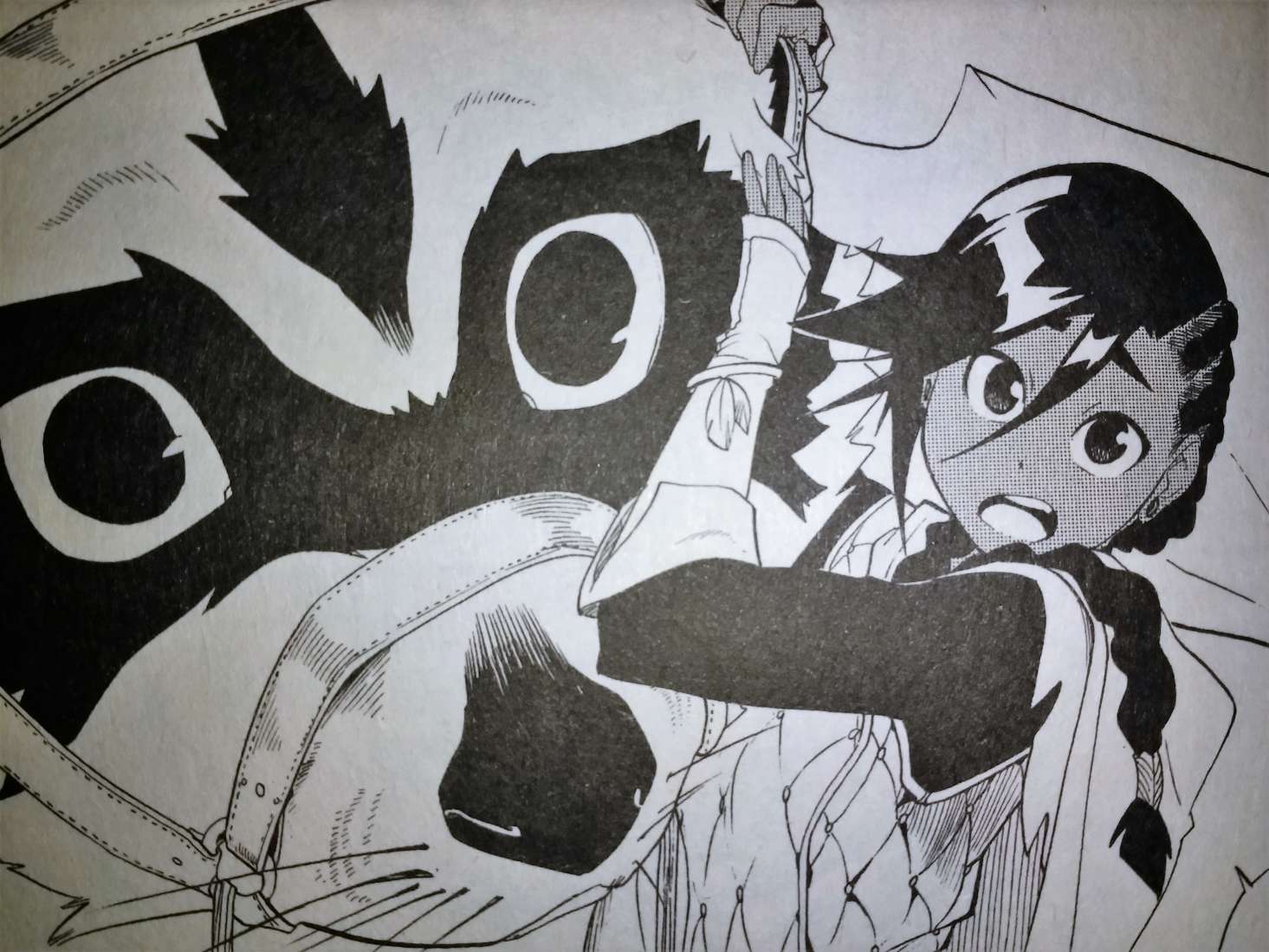
One of the first people Seth befriends in Caislean Merlin, the city of knights, Ocoho is an aspiring squire eager to be ordained and become a full-fledged Sorcerer Knight. Though confident in her abilities and diligent in her training, her inability to move up becomes a moving obstacle as her romanticism of the knights begins to fade. When faced with multiple ethical dilemmas of what she is striving to protect, Ocoho is forced to redefine her original notions of knighthood. What’s most interesting about her character arc is how the narrative actively avoids giving a straightforward answer through Ocoho’s closest confidants, leaving her to write the ending to her story.
Starting with her direct officer, Brangoire, she’s initially inducted into his methodology that a knight is at their finest as part of a team and should follow orders to the letter. When Seth arrives and the story introduces the Spectral Nemesis, he challenges this by simply inquiring about the collateral damage the knights failed to notice regarding the farmer’s crops below them. Overtime, she begins to act independently when faced with other equally challenging dilemmas such as venturing into the forbidden forest to save a friend or prioritizing the wellbeing of the citizens at the risk of defying the captain’s orders. She even manages to grab the attention of Queen Boudica, the ruler of Cyfandir who takes a shine to her while advising vigilance at the risk of losing further standing to the other knights and lords who already view her as a potential liability.
But when her suspicions about the forces moving in to take over Cyfandir are finally confirmed following a devastating revelation, she gains an unexpected word of encouragement from an unlikely source who had been dealing with his own trust issues.
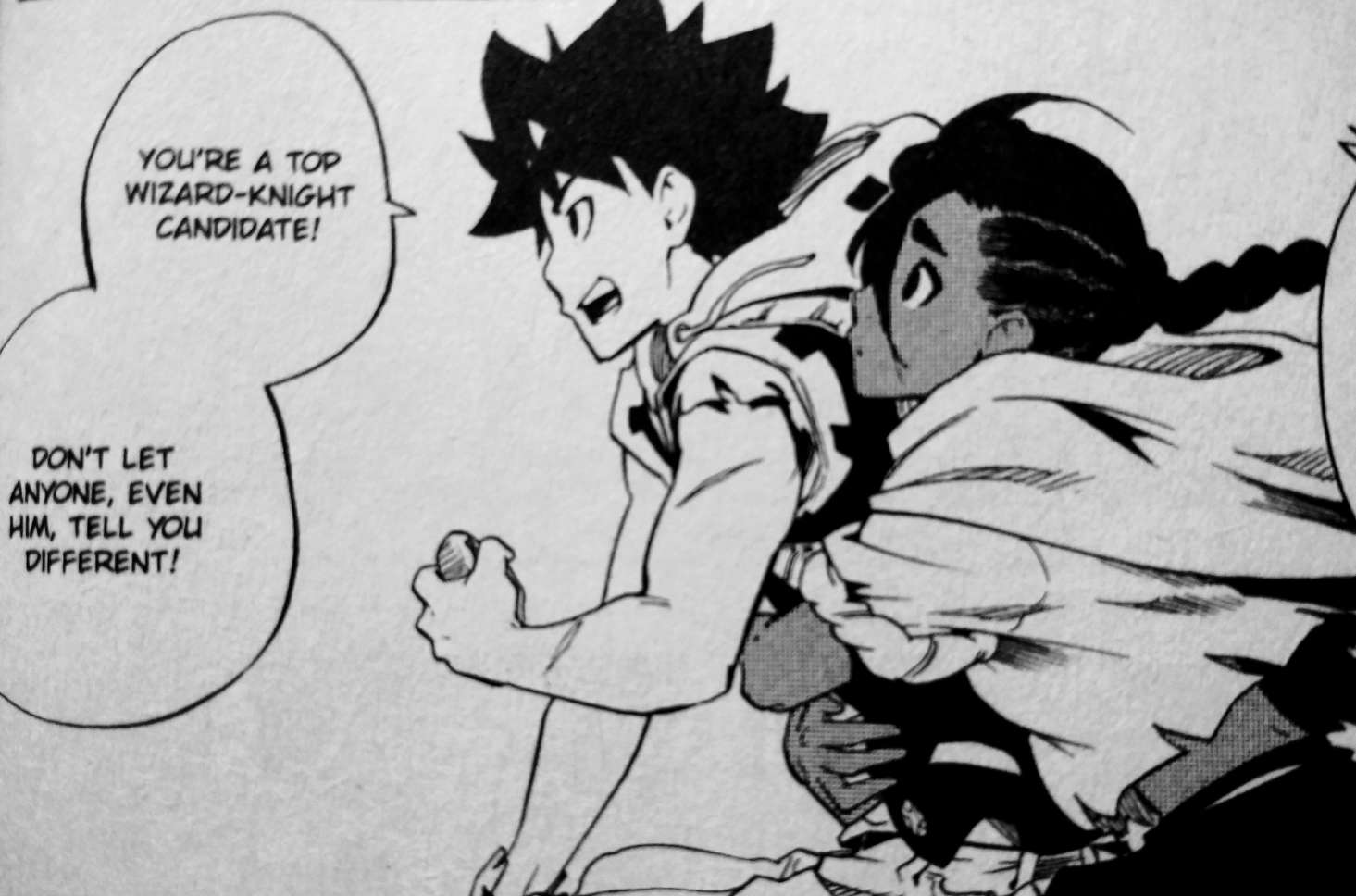
It’s a small, but significant moment in the narrative that recognizes the severity of her situation and her own inner strength to take charge of her destiny rather than be controlled by it, beginning her ascension from aspiring knight to champion of the people. She eventually achieves her original goal to become the ideal protector when an unexpected offer is put on the table. Without spoiling the moment, it recognizes her accomplishments while demonstrating Radiant’s mastery of execution, providing her a new story to write and a grander stage to pursue in one of the most satisfying conclusions of any series arc I’ve witnessed this year.
Though most of the cast in Radiant goes through their fair share of sacrifice, by proactively refining their roles and reconstructing our perception of Shonen, progressing their characterizations by emphasizing their individual strengths and weaknesses, and continuously showing rather than telling the direct consequences of their actions in the execution of an already packed story arc, each of them grows to become their own capable heroes.
Radiant is a lot of things for me: one of the best ongoing manga right now, a strong Anime of the Year contender for my own 2020 list – see you in December folks! – and a reminder of what the genre can accomplish by not only embracing it, but redefining what it can be.
Related: Radiant Season 2: Review
Radiant is more than a love letter to Shonen – it’s a Shonen masterpiece.
In a year that’s seen much of the world suffer from a global pandemic, corruption and injustice by the authority figures that are supposed to protect and serve, and my own home country devour itself from within as racism and violence threaten to take hold, I’ve had a lot of spare time to reflect on many subjects. A few weeks after I reviewed the second season of Radiant at the start of 2020, the Coronavirus had begun to shut down much of the United States and my employer finally gave us the word to work remotely, only to end up contracting it myself months after. When I covered the first season at the start of 2019, an influx of shootings in the country led to the highest amount of mass killings in US recorded history by the end of year. For the past four years, a US President has attempted to demonize the very people I call “Mi Familia,” promising to deport every immigrant without due process.
As Kotaku’s Nathan Grayson pointed out in his game review of Hades, it’s impossible to completely separate art from the time period it exists in. Though I can’t blame anyone for wishing for a bit of breather from the confines of reality, the fact remains that life goes on long after the story is over. For as much time and value we put into our favorite media, no art form, no matter how influential or high quality it is, will ever truly escape the confines of its given medium. Perhaps it shouldn’t. Then again, I suppose that’s just the nature of pop culture criticism in general – constantly changing for the next shiny toy that lands on my desk because of a compulsive need to be able to explain the importance or significance of why I’m consuming this.
Related: Games Criticism Is A Kindness
So why continue, you ask? Because even if art is a disposable medium in the sense that all of it is destined to join the cycle of release and discard, the best kind of criticism can open up further conversations long after the art has faded from memory. Because good criticism is more concerned with how we interact with media than telling us to look up superficial metrics. Because we both might walk away with not only a greater understanding of the media we love, but a new experience worth remembering.
Related: The Last of Us Part 2’s Metacritic Page Shows How Broken Numerical Scores Are
Because even if it doesn’t change the world, maybe it will change our outlook.
At a pivotal moment for the series, Seth and his friends are cornered into submitting to the “public’s will,” under the guise of giving the Infected a safe place in society. Forever doomed to be branded heretics, they take back their freedom with their own hands, rejecting the notion that they are less than human. It’s ironic that I’d find realism in a French comic that regularly holds tragedy and triumph on similar footing. In a world that fundamentally rejects those it would deem unnatural from the status quo, I find its optimism more endearing and relevant today than when it originally released in 2013 – even more so when it launched in North America in 2018. Just as Radiant’s main cast had to find the resolve to continue living in spite of who they are, perhaps we can do better for one another, one step at a time.
As a wise Sorceress once said, we’re not born human. We become human.

All screenshots taken off my phone using the official manga published by Viz Media and Ankama Éditions, unless noted otherwise. Additional resources from Funimation and Crunchyroll.
Special thanks to Arcane for editing and offering suggestions for this post, The Animasochists for allowing me to cite a portion of their work, Raitzeno for connecting me with the author who contributed the Goblin Slayer piece in that article, and Exile for their original research and expertise on that series which can be found here.
Dark Aether is a writer/contributor for TAY and AniTAY. You can check his previous writings here, Medium, or follow him on Twitter @TheGrimAether. Not Dead Yet.

Get involved!
Comments